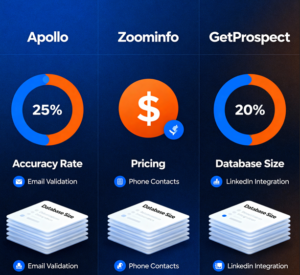A Lead Generation Agreement is a legally binding document that outlines the terms and conditions for generating and obtaining leads for a business. In this agreement, the parties involved clarify their responsibilities, such as the lead generation methods, payment terms, and the exclusivity of the leads.
It provides a framework for both parties to operate within, ensuring a smooth and mutually beneficial lead generation process. An effective Lead Generation Agreement is essential for businesses to establish a clear understanding and protect their interests when entering into lead generation partnerships.
Let’s delve into the details of a Lead Generation Agreement and its key components.
Key Components Of A Lead Generation Agreement
Parties Involved
In a lead generation agreement, the parties involved are usually the company seeking leads (referred to as the client) and the provider of lead generation services. The agreement clearly outlines the roles and responsibilities of each party to ensure a clear understanding of the arrangement.
Lead Generation Services
The lead generation services section of the agreement details the specific services the provider will offer to generate leads for the client. This can include strategies such as email marketing, social media advertising, content marketing, or search engine optimization (SEO).
Compensation
The compensation section outlines the financial terms of the agreement. It specifies how the provider will be compensated for the lead generation services, whether it’s a flat fee, a commission-based structure, or a combination of both. Additionally, it may detail payment schedules and any other financial considerations.
Terms And Conditions
The terms and conditions section sets out the duration of the agreement, any termination clauses, confidentiality agreements, and other legal parameters. It’s crucial for both parties to have a clear understanding of their rights and obligations under the lead generation agreement.
Common Challenges In Lead Generation Agreements
Lead Generation Agreements can pose various challenges for businesses. Issues may arise due to unclear terms, insufficient lead quality, lack of communication between parties, disagreements over pricing, and difficulty in measuring success. It is crucial for both parties to establish clear expectations and ensure effective collaboration to overcome these challenges in lead generation agreements.
Quality Of Leads
When it comes to lead generation agreements, one of the most common challenges is ensuring the quality of leads obtained. Businesses rely on leads to generate revenue and grow their customer base. However, not all leads are created equal, and this can lead to frustration and wasted resources.
One of the key factors in determining the quality of leads is the source from which they are obtained. Leads that are acquired through reputable and targeted channels tend to be of higher quality. These channels could include organic search traffic, social media, content marketing, and email marketing campaigns.
It is also important for businesses to clearly define what constitutes a qualified lead. This could be based on specific demographic information, purchasing intent, or other relevant criteria. By clearly establishing these parameters, businesses can effectively filter out unqualified leads and focus their efforts on those with the highest potential for conversion.
Disputes And Resolutions
Another common challenge in lead generation agreements is the potential for disputes between businesses and lead generation providers. Disputes can arise due to issues such as disagreement over the quality of leads, breach of contract, or dissatisfaction with the lead generation process.
To mitigate disputes, it is crucial to have a well-defined lead generation agreement in place. This agreement should clearly outline the responsibilities and expectations of both parties, including lead quality targets, payment terms, and dispute resolution procedures.
If a dispute does arise, it is important for both parties to approach it with a mindset of collaboration and finding a mutually beneficial resolution. Open and transparent communication is key in resolving any issues that may arise. By addressing disputes in a timely and professional manner, businesses can maintain a positive working relationship with their lead generation providers and minimize any potential disruptions to their lead generation efforts.
Tips For Drafting An Effective Lead Generation Agreement
Drafting an effective lead generation agreement requires careful consideration of key factors. From clearly defining expectations to outlining payment terms, it is crucial to cover all aspects to ensure a successful partnership. Take the time to create a comprehensive agreement that addresses all necessary elements for a productive lead generation process.
When it comes to lead generation, having a solid agreement in place with your partners is crucial. An effective lead generation agreement helps outline expectations, performance metrics, and data privacy and security measures. To ensure you draft a comprehensive agreement, consider the following tips:
Clearly Define Expectations
In order to set the foundation for a successful lead generation partnership, it is essential to clearly define expectations right from the beginning. This includes detailing the quantity, quality, and specific criteria for leads to be generated. By ensuring both parties have a clear understanding of the expected deliverables, you can avoid misunderstandings down the line.
Include Performance Metrics
In addition to defining expectations, incorporating performance metrics into your lead generation agreement can help measure the success of the partnership. This can include metrics such as conversions, lead-to-sales ratios, or any other relevant key performance indicators (KPIs). By having measurable goals in place, both parties can track progress and make necessary adjustments to optimize lead generation efforts.
Address Data Privacy And Security
Data privacy and security are paramount in any lead generation partnership. It is crucial to address these concerns within your agreement to ensure the safety and confidentiality of the shared data. Consider including clauses that outline how data will be collected, stored, and protected, as well as any obligations both parties have to comply with relevant privacy regulations.
By clearly addressing data privacy and security, you can instill confidence in your partners, mitigate risks, and demonstrate your commitment to protecting sensitive information.
Frequently Asked Questions On Lead Generation Agreement
What Is Lead Generation Agreement?
A lead generation agreement is a contract between businesses outlining terms of acquiring potential customers. It includes details on lead sources, payment terms, and lead quality criteria. This agreement facilitates collaborations between companies to boost sales and marketing efforts.
What Is The Lead Generation Clause?
The lead generation clause determines how leads are acquired and managed in a contract. It outlines the process for generating and handling sales leads.
What Is A Lead Generation Plan?
A lead generation plan is a strategy to attract and capture potential customers for your business. It includes tactics like content marketing, social media advertising, and email campaigns to gather contact information and convert leads into sales. It helps businesses expand their customer base and drive growth.
Which Are The 4 Steps Of The Lead Generation Process?
The four steps of the lead generation process include: 1. Identifying and attracting potential leads. 2. Engaging and capturing their contact information. 3. Nurturing and building relationships with leads. 4. Converting them into customers.
Conclusion
A lead generation agreement is a vital tool for businesses aiming to boost their customer base and revenue. By clearly defining the roles, responsibilities, and expectations of both parties, such an agreement ensures a smooth and successful lead generation process.
Remember to customize the agreement based on your specific needs and goals, and regular evaluation and communication are key to its effectiveness. Get started today and watch your business flourish!




